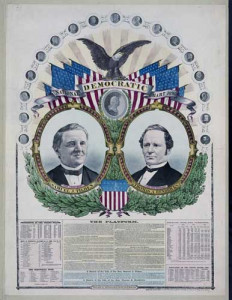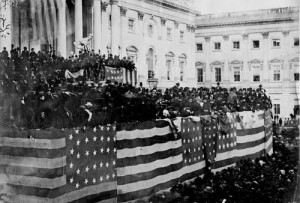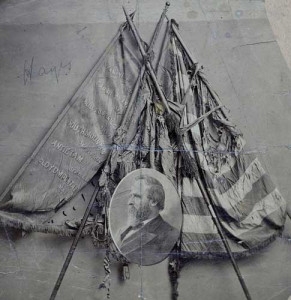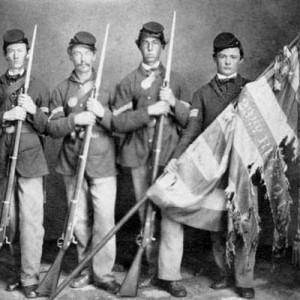Flags flew during disputed election

When Americans vote for a president, you can count on American flags being displayed outside polling places, alongside roads and beside the winner. You can also, every now and then, expect a controversial election with claims about stolen or illegal votes.
A case occurred 140 years ago when the centennial of 1776 was celebrated. Republican Rutherford B. Hayes and Democrat Samuel Tilden went head to head. Days after the November 7, 1876, election, newspapers were still speculating on who won. The New York Herald, for example, headlined its coverage with these phrases: “Nip and Tuck”…“Battle for the Presidency Still Undecided”…“Mammoth National Doubt”…“Intense Anxiety Everywhere.”

Asked for his opinion of who won, Mark Twain cautioned, “Do not raise the flag” for Tilden. But, when the raw votes were finally counted, that’s who won. Then, after the Electoral College met, Hayes triumphed – by a single vote.
The New York Times, reviewing the 1876 process recently, revealed how complicated the election was: “Mr. Tilden, with 184 electoral votes, had fallen one vote short of a majority necessary for election, with the 19 electoral votes of Florida, South Carolina and Louisiana still being decided. Mr. Tilden had carried all three states, but there were many instances of voter fraud and voter intimidation – primarily toward black voters, who were likely to support Republicans. Each state had a Republican-controlled returning board that held the power to throw out contested votes. There was also controversy in Oregon, a state carried by Mr. Hayes, where the Democratic governor removed one of the three Republican electors and replaced him with a Democrat.”

The outcome in Hayes’ favor wasn’t sorted out until February, shortly before Inauguration Day, which was then held March 5. “The east portico of the Capitol was gay with flags,” one newspaper enthused, referring to the 37-star American flags at the inaugural ceremonies. In addition, the platform for the new chief executive’s speech was “trimmed with the ensigns of different nations.” As the sun burst through clouds, the report continued, “there was just breeze enough to move the flags and plumes.”

As the inauguration proceeded, The New York Herald told readers that “a good many flags [were] flung from the windows of private residences” in that city. In Brooklyn, “the flags of the city and county were displayed” on City Hall and the Courthouse, while houses of Republican voters were festooned with the Stars and Stripes.
Hayes was very familiar with American flags because he had served in the Union Army during the Civil War and was wounded five times. In 1864, his wife, Lucy, sent a flag to his regiment, the 23rd Ohio Volunteer Infantry, and worried in letters about whether it had been delivered.

“Has the flag been received yet?” she asked on May 26, 1864. “Let me know if you have received it and whether it has been presented.” A few days later, she wrote, “I wish I could have seen the Flag before it went – now I fear it may not be what it ought to be – or that you have not got it.”
That summer, flags remained on her mind. After learning that the standard bearer in her husband’s command “loves the flag,” she said, “My heart warmed towards him, I can imagine what his feeling must be towards it after having borne it in battle – do you know him…personally – if you do I shall feel that the Flag is nearer to me.”
